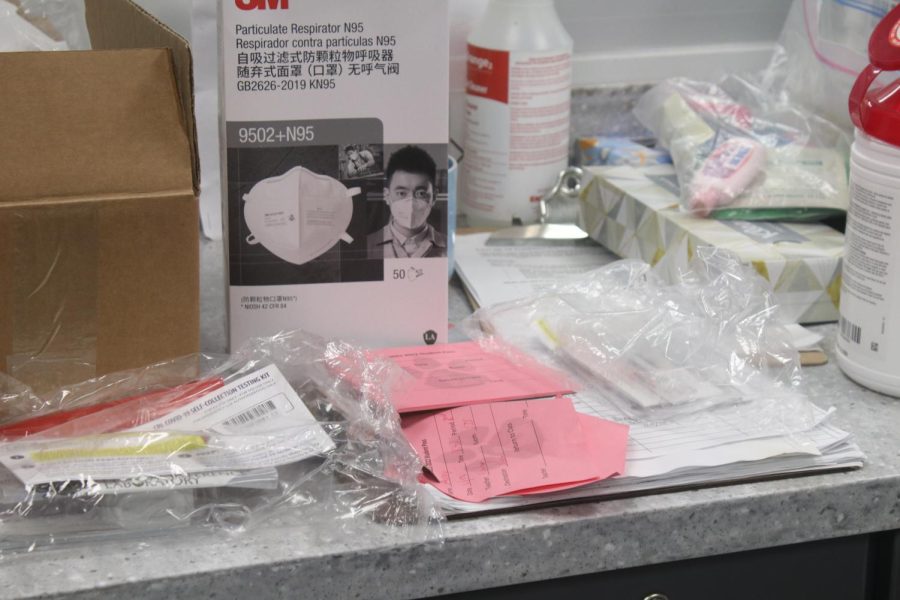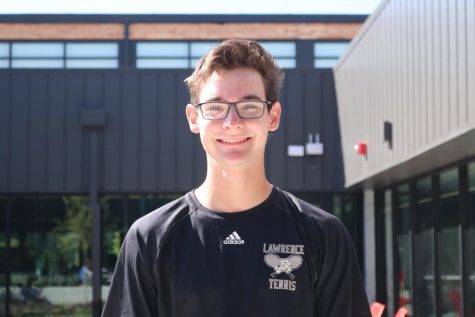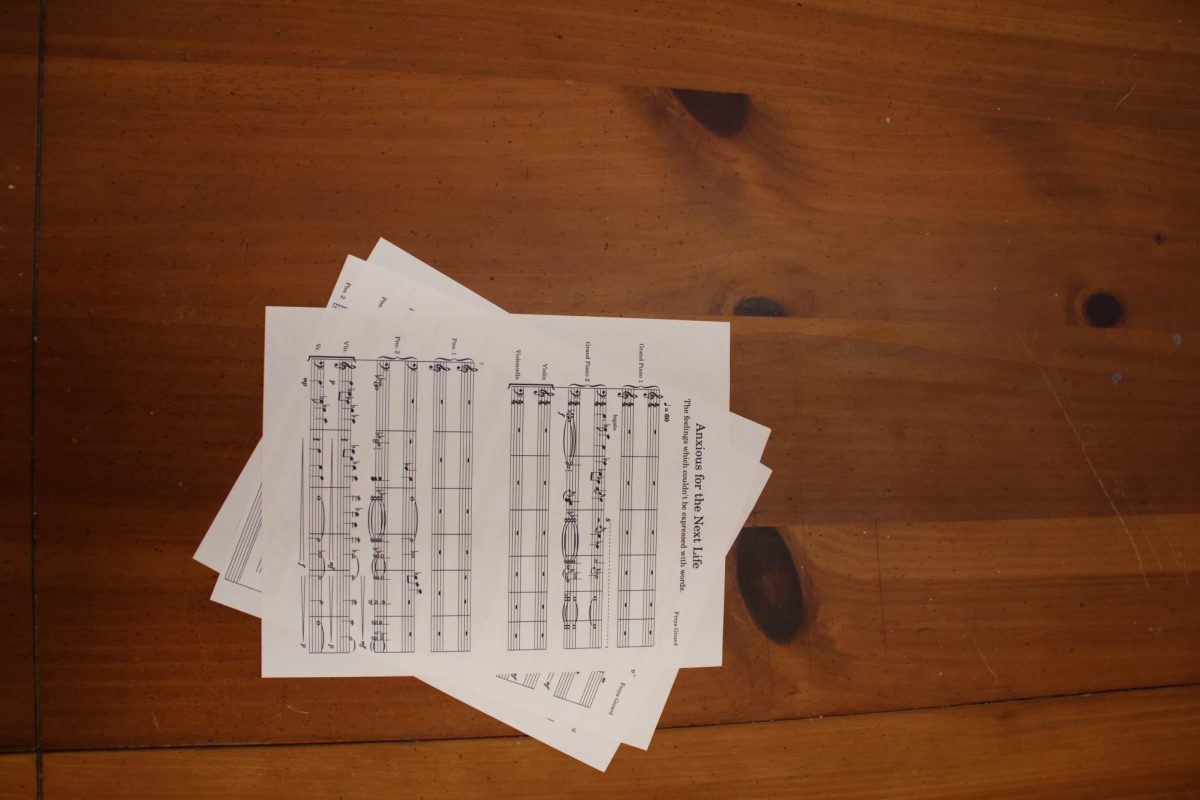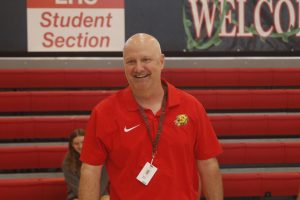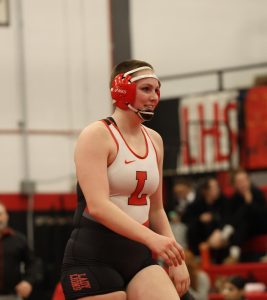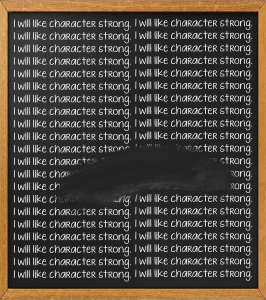Increased COVID-19 cases put strain on staffing and leads to questions about remote learning
The newest COVID-19 variant has led to a large increase in student and staff absences causing some to call for a temporary return to online school.
COVID-19 prevention supplies such as tests and masks sit on a counter in the LHS nurses office.
January 16, 2022
As the Omicron variant of COVID-19 sends local and national case numbers through the roof, USD 497 schools have started to feel the effects, leading some to question whether a temporary return to online learning is a possibility.
In the first week back from winter break Lawrence Public Schools saw an almost 10 percentage point increase in student absences compared to past years, according to statistics provided by the district’s executive director of data and technology Zach Conrad. On Thursday, Lawrence High had 26.4% of its students absent, according to the LHS attendance office.
The absence issue isn’t just with students though, as teachers have also had to miss large swaths of school due to COVID-19 and other illnesses, leading to a worrying shortage of teachers and substitutes.
Finding subs has always been a challenge, but as the COVID-19 pandemic forces teachers to stay home and older, retired teachers sub less, the district has turned to having other teachers, who are on their plan periods, cover classes when substitutes can’t be found. It’s become a daily push to fill classes as teachers call in sick.
“It has been tricky attaining subs on some days,” said LHS sub secretary and receptionist Cindy McCaleb, who makes sure every class is covered. “Now with the COVID-19 variant numbers rising, it has become more challenging. There are not as many subs available to teach, which leaves us having to help cover each other’s classes. This results in me begging people to cover classes, which is so hard for me to do.”
The attendance crisis has been felt across the state with Olathe, Eudora and De Soto districts already having cancelled classes due to a lack of available teachers.
To help aid in the issue, the Kansas State Department of Education implemented a new emergency policy for substitute teacher qualifications. Usually, the KSDE requires 60 semester credit hours from a regionally accredited college or university, but the new policy drops that requirement. The state still requires substitutes to be 18 years old, have a high school diploma and receive a background check.
“Since the state board just approved the policy on Wednesday, it’s not positively impacting us yet,” USD 497 executive director of communications Julie Boyle said. “We do appreciate the additional flexibility during this public health emergency. Lawrence Public Schools has high expectations for the adults who work with our students and will continue to work with our substitute teacher provider to hire the most highly-qualified individuals.”
Students expressed concern about how the shortage might affect teachers in the classroom.
“The substitute teacher shortages put more pressure on teachers to attend school even if they are feeling ill, which is largely affecting the energy of the classroom making classes and teachers less productive,” sophomore Kellen McDonough said.
The Omicron variant of COVID-19 has sent cases skyrocketing across the country, including in Douglas County where daily cases are over three times higher than the previous highest peak.
But while cases have reached their highest peaks ever, vaccines have proven effective at reducing the most serious effects of the illness and reducing hospitalizations and fatalities.
The booster shot also just recently became available for everyone 12 years and older and has been proven to help prevent the worst effects of the virus. All COVID-19 vaccinations and booster shots are free. Find local vaccine locations here: https://www.vaccines.gov.
“The district encourages all who are eligible to get vaccinated and get your booster shot,” Boyle said. “Wear your mask correctly and consistently when around others and practice at least three feet of safe distancing. Please stay home when you’re feeling sick or have been exposed to someone who is ill.”
Some students have noticed a change in environment since the uptick in cases due to Omicron as students and teachers alike fear the possibility of catching the virus and having the school move back to online learning.
Last year during online learning, D’s and F’s in the district rose dramatically, leading many to say that remote learning — even if temporary — should be a last resort.
The Kansas legislature passed limits on remote learning last year, stating that schools could only use a remote learning option for 40 total hours of instruction, or five to six days.
“The energy of the school has been tense for most of my friends because we are worried more people will get sick, leading us back to online teaching, which none of us want,” freshman Chloe Novosel said.
But even with the learning deficiencies of online school, some believe the COVID-19 case numbers are high enough to warrant a temporary shift.
“While I’m not at all fond of the idea of temporarily being online, the shortened week, as well as early in the semester, makes me feel like if we’re going to have to take some time out of the building, now is the best time,” junior Jackson Green said. “With so many kids out it feels like, for safety purposes, we need to just do it.”
Boyle reinforced that the district would watch numbers carefully and make decisions with the best interests of students and staff in mind.
“The district is monitoring conditions,” Boyle said. “If circumstances warrant a schedule change or the closing of a classroom or school, we will provide affected staff, students and families as much notice as possible. It would depend on the circumstances involved. The district will continue to make decisions with the safety and the best interests of students and staff in mind.”
Boyle said the district does not currently have plans to go online but encouraged students to be prepared for the event that school work may need to be completed remotely due to the rapidly changing COVID-19 situation.
“Members of our school community should be prepared with alternate plans should sudden changes to our regular schedule or school operations become necessary,” Boyle said. “Families should be sure they have accurate contact information on file with their schools. Students should take their devices home each day.”
USD 497 has been stricter on COVID-19 regulations than most other Kansas school districts, never dropping its mask mandate even as most surrounding areas did. Olathe and Blue Valley schools do not have district-wide mask mandates, but school’s individually make masking decisions based on COVID-19 infections within each individual school.
Boyle assured the USD 497 community that school officials would continue to make decisions that put staff and student safety first.
“Lawrence Public Schools has been a leader in the community in following the changing guidance of federal, state, and local public health experts in the development of layered mitigation strategies to prevent the spread of the virus,” Boyle said. “The district is proud of our students and staff for their cooperation with these prevention measures, their flexibility, and their willingness to work together to do whatever is necessary to prioritize keeping students safe and in school.”
Jack Ritter, Kenna McNally, Arien Roman-Rojas and Maebelle Hamlin contributed to this report.




